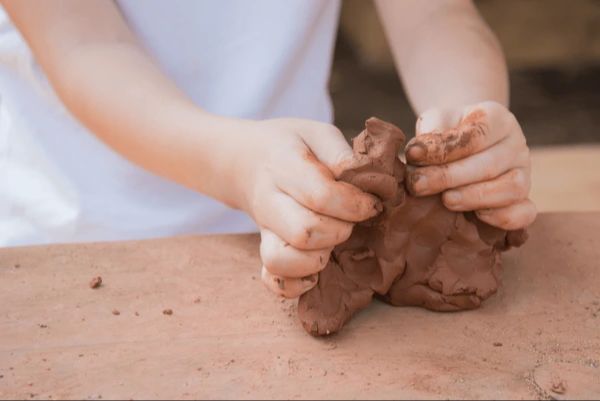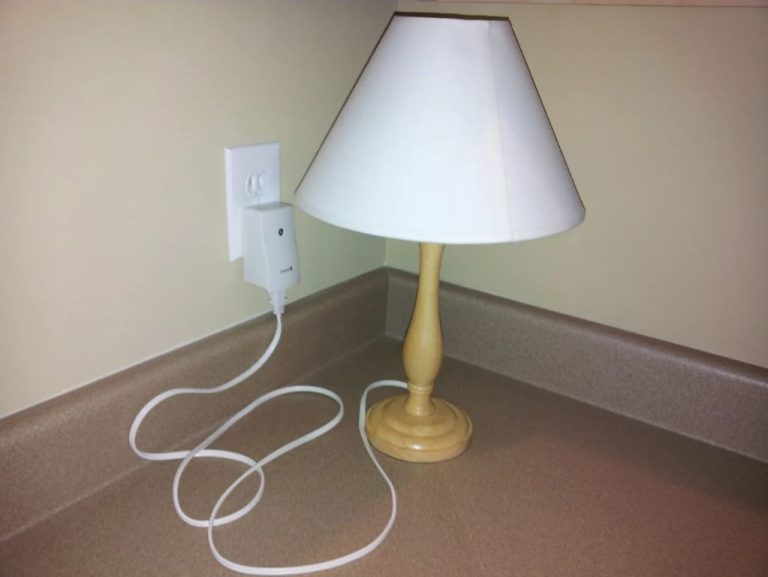What Are The 4 Types Of Measuring Tools?
Measuring tools are extremely important in many fields, especially in science, engineering, construction, manufacturing, and cooking. They allow us to quantify and analyze the world around us with precision. Some key measuring tools include rulers, tape measures, calipers, micrometers, thermometers, scales, stopwatches, and gauges.
Without accurate measuring tools, it would be difficult to ensure products meet specifications, construct buildings and infrastructure to exact measurements, perform scientific experiments and calculations, or cook recipes with precision. Measuring tools remove ambiguity and guesswork, while providing hard data and repeatable results.
This article will provide an overview of some of the most common types of measuring tools, their functions, and their importance across various disciplines. The ability to precisely measure length, mass, time, temperature, and other metrics is a key factor underlying much of the technological and scientific progress humanity has achieved.
Length Measuring Tools
Some of the most common length measuring tools are rules, tapes, and calipers. Rules are typically flat bars marked with graduations to measure lengths in standard units like inches or centimeters. They come in various materials like wood, plastic, or metal and can have different scales for precision. Steel rules are very durable and tend to be accurate. Basic 12-inch rulers marked in 1/16 increments are commonly used in schools while high precision engraved stainless rules with graduations up to 1/1000 inch are used in engineering workshops.
Measuring tapes are flexible, allowing measurement of curved surfaces. They are made of materials like cloth, plastic, fiberglass, or metal. Common measuring tapes used in construction are retractable and fit in a case. Tape measures can range from simple pocket tapes a few feet long to surveyor’s tapes over 100 feet long. Measurements are marked in standard or metric units. Accuracy depends on tension applied, thermal expansion of the tape material, and wear over time.
Calipers are used to precisely measure internal or external distances. Vernier calipers have two adjustable jaws connected to a calibrated slide. The fixed mainscale jaw provides coarse measurements while the vernier scale on the movable jaw allows more precise readings. Different types of calipers are available including dial, digital, and micrometer styles. According to Steeljrv, calipers are one of the most important types of length measurement tools due to their precision.
Height Measuring Tools
Height measuring tools are used to measure vertical distances and elevations. Some common types of height measuring tools include:
Levels – Levels use a sealed vial with an air bubble to determine if a surface is perfectly horizontal or vertical. Common types include spirit levels, laser levels, and digital levels.
Transits – Also known as theodolites, transits are more sophisticated optical instruments used in surveying. They can measure vertical and horizontal angles very precisely.
Other height measuring tools include clinometers for measuring slopes and inclinations, rulers and tape measures for shorter heights, and ultrasonic and laser distance sensors.
Levels and transits are essential for construction, engineering, and surveying applications where precise vertical measurements and 90-degree angles are required. They help ensure structures, roads, bridges and more are built accurately to specifications.
Angle Measuring Tools
Angle measuring tools are used to measure, set, or layout angles accurately. The two main types are protractors and bevel gauges.
Protractors are instruments used to measure and draw angles. They come in various sizes and can be made of different materials like plastic, wood, or metal. Some common types of protractors are circular protractors, semi-circular protractors, and digital protractors 1.
Bevel gauges, also known as bevel protractors or sliding bevels, are adjustable tools used to measure, layout, or transfer angles. They consist of two arms pivoted at one end and can be set to any angle. Bevel gauges are very accurate and can measure angles to half a degree or even one-tenth of a degree. Some types include simple bevel gauges, universal bevel gauges, and digital bevel gauges 2.
Depth Measuring Tools
Depth gauges, calipers, and micrometers are common tools used to measure depth.
Depth gauges come with a thin, sharpened rod that can reach into openings to take internal measurements. Dial indicators on the tools show the depth measurement on a numbered scale.
Digital calipers are extremely common and allow for precise measurement of depth. They have two arms – one arm stays fixed while the other slides to touch the bottom of an opening or hole. An LCD screen displays the depth measurement digitally.
Micrometers work similarly to calipers but can achieve even more precise measurements. A micrometer has a fixed arm and a rotating thimble that lowers a spindle into a hole. The micrometer reads out the depth on a graduated dial or digitally on an LCD screen. Micrometers need to be calibrated and are more sensitive than calipers.
These tools have a wide range of depth measurement capabilities. For example, calipers may measure from 0-6 inches while micrometers can measure thousandths of an inch. Using the right tool allows for an accurate reading of depth.
Sources:
https://www.aztlanvirtual.com/category/technology-and-gadgets/
Temperature Measuring Tools
Some of the most common temperature measuring tools include:
Thermometers
Thermometers are devices used to measure temperature. Some common types of thermometers are mercury thermometers, alcohol thermometers, digital thermometers, and infrared thermometers. Mercury thermometers use mercury inside a glass tube to measure expansion and contraction with temperature changes. Alcohol thermometers use alcohol instead of mercury. Digital thermometers use thermistors or thermocouples to provide temperature readings on a digital display. Infrared thermometers measure the infrared energy emitted from an object to determine its temperature without contact.
According to this Reddit comment, thermometers are one of the most basic temperature measuring tools.
Thermistors
Thermistors are temperature sensitive resistors used in some digital thermometers. As the temperature changes, the electrical resistance of the thermistor changes in a predictable way, allowing it to measure temperature.
Thermocouples
Thermocouples consist of two dissimilar metal wires joined at one end. They produce a small voltage proportional to temperature. Thermocouples are inexpensive, durable, have a wide temperature range, and can measure high temperatures. They are used in some digital thermometers as well as industrial temperature measurement applications.
According to this product listing, thermocouples are one type of temperature sensor used in industrial measurement tools.
Pressure Measuring Tools
Pressure measuring tools are used to determine the pressure in liquids, gases, and vapors. Some common types of pressure measuring tools include:
Manometers
Manometers measure pressure by balancing the weight of a column of liquid against the pressure being measured. They can measure both positive and negative gauge pressures. Some types of manometers include U-tube manometers, inclined manometers, and differential manometers. Manometers provide a simple and low-cost method for measuring pressure (Source).
Barometers
Barometers are tools used to measure atmospheric pressure. Some common types are mercury barometers, aneroid barometers, and digital barometers. They have applications in meteorology as they can be used to predict short term changes in the weather (Source).
Pressure Gauges
Pressure gauges are instruments used to measure and display pressure in a system. Some common types are bourdon tube pressure gauges, bellows pressure gauges, and diaphragm pressure gauges. They are useful for monitoring pressure changes and diagnosing issues in hydraulic and pneumatic systems.
Weight Measuring Tools
Weight measuring tools are used to determine the mass or weight of an object. Some common types of weight measuring tools include:
- Scales – These tools use a balance mechanism to compare an unknown weight to a known weight. Some examples are bathroom scales, kitchen scales, and analytical balances used in science labs.
- Balances – Balances also compare an unknown weight to a known weight. However, balances are more precise than scales and are used for applications requiring high accuracy, like in scientific research or precious materials weighing.
- Load cells – Load cells are transducers that convert a force like tension or weight into an electrical signal that can be measured. They allow digital weight measurements and are found in many modern scales.
Scales have been used to determine weight and mass for centuries. One of the earliest types was the balance scale, which originated in Egypt around 5000 BCE and consisted of a beam balanced on a fulcrum with plates or pans hanging from each end. More advanced balance scales were later created, like the equal-arm balance invented in China around 200 BCE.
In the 18th and 19th centuries, improvements were made to balance scales to increase precision. Some key innovations included the steelyard balance in Britain and the analytical balance in Europe. In the late 19th century, load cells began to be used, enabling scales to provide digital weight readings.
Today, scales and balances using load cells are ubiquitous and used for everything from weighing letters and packages to determining the ingredients in food to checking the mass of chemicals in a laboratory. They provide fast, accurate, and reliable weight measurements across many industries and applications.
Sources:
https://www.scalesmart.com/floor-scales-platform-scale
https://www.eavartravel.com/blog/category/tabriz/
Time Measuring Tools
Time measuring tools are used to quantify and record increments of time. Some of the main types of time measuring tools include:
Clocks
Clocks are devices that display the current time and date. Some common types of clocks are analog clocks with hour and minute hands, digital clocks that display the numerical time, atomic clocks that use oscillations of atoms to keep precise time, and sundials that use the sun’s position to indicate time.
Stopwatches
Stopwatches are handheld timepieces designed to measure intervals of time and durations. They can be started, stopped, and reset as needed to time events down to fractions of a second. Stopwatches are commonly used in sports, lab experiments, and manufacturing.
Timers
Timers are devices used to signal the passage of fixed time intervals through visual or audio alerts. Some examples are kitchen timers, hourglasses, countdown timers, and computer or smartphone timer apps. Timers help time specific activities like cooking, speeches, tests, or parking meters.
These tools quantify elapsed time ranging from seconds to years. Accurately measuring time intervals is essential for scheduling events, tracking productivity, and conducting scientific experiments (Source). Time measurement enables the synchronization and precision required in the modern world.
Conclusion
When selecting measuring tools, it’s important to consider the task at hand and choose the appropriate tool for the job. Using the right tool will help ensure you get accurate measurements and avoid errors. Reviewing the different categories of measurement tools can help give you a sense of all your options. Length, height, angle, depth, temperature, pressure, weight, and time measuring devices each serve a particular purpose.
Choosing the proper measuring tool is key to precision, safety, and efficiency. With the wide variety available today, there should be a well-suited tool for any measuring situation. Investing in quality tools made for your specific needs can save time and hassle in the long run. Understanding the correct uses and limitations of instruments can help prevent mistakes or accidents. Overall, proper tool selection leads to enhanced productivity, functionality, and accuracy.




